The best pedals for mountain bikers – Group test of 16 clipless and flat pedals
Pedals are the only point of contact with your bike besides the grips, and are essential for control and safety on the trail. While many underestimate them when they get started, they ultimately turn out to be one of the bike’s most important components. We put 16 clipless and flat pedals through the wringer over several months.
Table of contents – What to expect in the test
- What makes good mountain bike pedals?
- The clipless pedals on test
- The flat pedals on test
- Clipless pedals or flats – What sets them apart?
- Flat pedals – Maximum grip
- Clipless pedals – Firmly connected for the optimal footing
- How wide are you? The stance width and q-factor of the pedals on test
- Conclusion – The best clipless and flat mountain bike pedals

How well can you concentrate on the road while driving and selecting your music, navigating, or writing messages on your mobile phone? About as well as you can focus on the trail while mountain biking if your feet are constantly slipping around on the pedals. That’s why the title of this group test is what it’s all about: Grip! Don’t slip! A secure footing on the bike provides safety and instils you with confidence. Therefore, good pedals are worth more than you might realise at first glance. We tested 10 flat and 6 clipless pedals to find out which of them you should put your trust in.
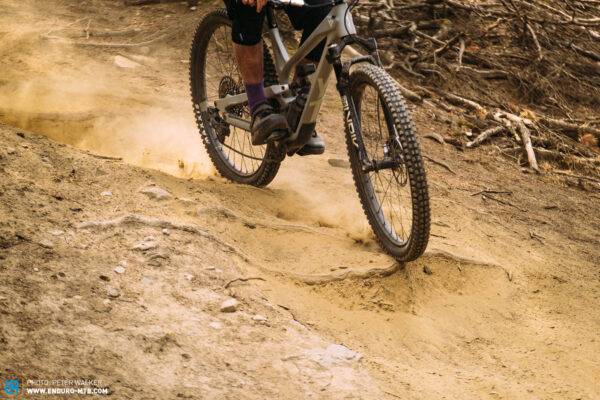

What makes good mountain bike pedals?
The tested pedals are intended for trail and enduro riding, so having a firm footing on the pedals is crucial, allowing you to concentrate on the trail and have more fun on the bike. Many of the pedals are customisable, which is great since you can tailor them perfectly to suit your preferences. Durable bearings and seals are important criteria, too, making the pedals spin smoothly for as long as possible – after all, you don’t want to buy new ones every season. Finally, self-cleaning also plays a role, because your pedals shouldn’t let you down even when things get wet. The weight plays a subordinate role, because we would rather haul around a few more grams and be confident in our gear. Of course, the shoes you wear also have a huge influence on your footing. Due to the subjectivity of fit, however, we decided to focus only on the pedals for this test.
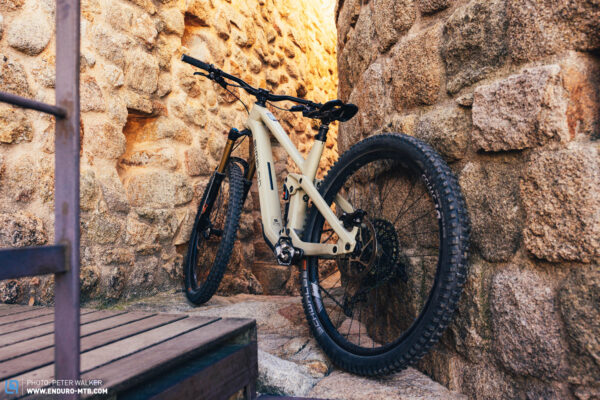

The clipless and flat pedal test field – Something for everyone
The test field has a huge price range from € 49.99 to € 290.00 and is divided into clipless and flat pedals, whereby clipless pedals are usually much more expensive.
The clipless pedals on test
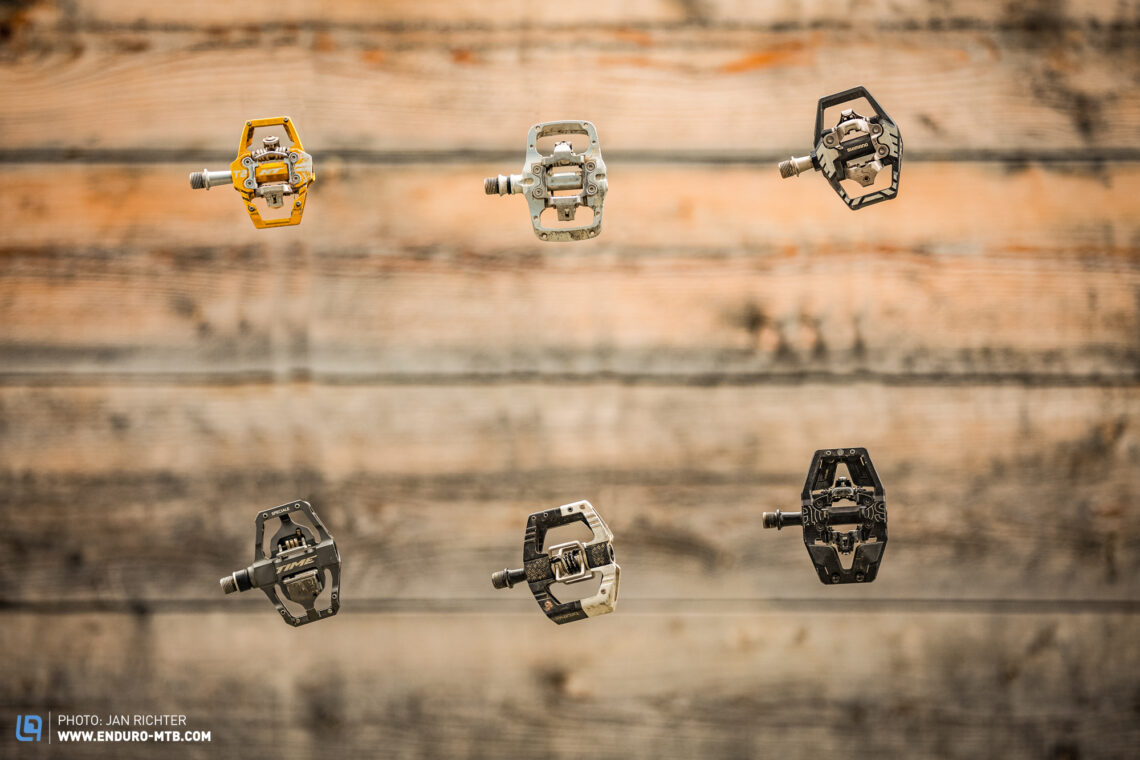
The test field of clipless pedals is super diverse, as 5 of the 6 pedals on test rely on different clipless mechanisms. As the winners of the previous pedal group test, we had to include the Crankbrothers Mallet E LS pedals with their unique clipless system. The HT T1 pedals were hot contenders the last time around, too, thanks to the feeling they offered when clicked in, though they fell short on durability. Can the successors, the HT T2 pedals, build on this success and deliver a complete package? The Shimano DEORE XT PD-M8120 pedals easily win the title of the longest name. They’re absolute mountain biking classics and no clipless pedal group test would be complete without them. The TIME SPECIALE 12 pedals feature an unusual clipless system and we were curious to see how they fare on the trail. Last year, we were introduced to the Acros Clipless Pedal. Aside from the somewhat uncreative name – yes, they’re called Clipless Pedal – they’ve got some exciting features to offer. The Hope Union Trail pedals are considered an insider tip in our headquarters. The clipless mechanism won many of our test riders over in our gravel pedal group test, but can it perform just as well on the trail?
| Brand | Model | Price | System |
|---|---|---|---|
| Acros | Clipless Pedal | € 119.95 | SPD |
| Crankbrothers | Mallet E LS | € 179.99 | Crankbrothers |
| Hope | Union Trail | € 185.00 | Hope |
| HT | T2 | € 159.90 | HT |
| Shimano | DEORE XT PD-M8120 | € 134.95 | SPD |
| Time | SPECIALE 12 | € 290.00 | TIME |
The flat pedals on test

The test field of the flat pedals is divided into two groups: composite and aluminium. Some of the price differences between these two groups are substantial, but how will this affect their performance on the trail? The most affordable pedals on test are the LOOK Trail Fusion. They’re the first flat pedals from the French road bike pedal specialists and cost just € 50. You don’t have to reach much deeper into your pockets for the SIXPACK Kamikaze PA and the OneUp Composite pedals, and our test will show how these affordable alternatives measure up against the high-end aluminium counterparts. The SQlab 50X pedals present an exciting concept: they’re available in three different axle lengths, allowing you to choose according to your preferred stance width. The last composite pedals on test, the TATZE LINK Composite, already stands out from the crowd due to their unusual design. But can they deliver an unusual performance on the trail, too?
The Race Face Atlas are the first of the aluminium flat pedals. They were revised last year and now feature larger platforms and a different shape. The winners of last year’s flat pedal group test, the Hope F20s, have been replaced in the UK brand’s line-up. The successors to these are the Hope F22 flat pedals, which we obviously included in the test field. The Crankbrothers Stamp 7s delivered a convincing performance in past tests, and this time we tested the large version of the Californian brand’s flat pedals. The Nukeproof Horizon Pro Sam Hill Enduro are absolute classics among flat pedals and are used by some of the fastest flat pedal racers. As the last pair in the aluminium flat pedal group, we’ve got the Chromag Daggas, featuring an aggressive and dangerous look. But what about their all-round capabilities?
| Brand | Model | Price | System |
|---|---|---|---|
| Chromag | Dagga | € 165.95 | Aluminium |
| Crankbrothers | Stamp 7 Large | € 179.99 | Aluminium |
| Hope | F22 | € 180.00 | Aluminium |
| LOOK | Trail Fusion | € 49.99 | Composite |
| Nukeproof | Horizon Pro Sam Hill Enduro | € 117.99 | Aluminium |
| OneUp | Composite Pedals | € 59.50 | Composite |
| Race Face | Atlas | € 199.90 | Aluminium |
| SIXPACK | Kamikaze PA | € 59.99 | Composite |
| SQlab | 50X | € 79.95 | Composite |
| TATZE | LINK Composite | € 89.00 | Composite |
Clipless pedals or flats – What sets them apart?
The question of whether a mountain biker rider prefers clipless or flat pedals is like a question of faith. Some are evangelical about one system and don’t want to hear about anything else. However, as with most things, there are advantages and disadvantages to both.
Flat pedals – Maximum grip
Flat pedals are sometimes referred to as platform pedals as they provide large platforms that you can simply place your feet on. This also allows you to easily take your feet off the pedals, and they’re mainly used by MTB purists and aerial acrobats. Or all those who think they can drift through the inside-line like Sam Hill with one foot hanging down. We always advise beginners to start with flats because of their simplicity. They also help you learn the right technique and you’ll feel more confident in slow, technical sections as you won’t fear tipping over with the bike.
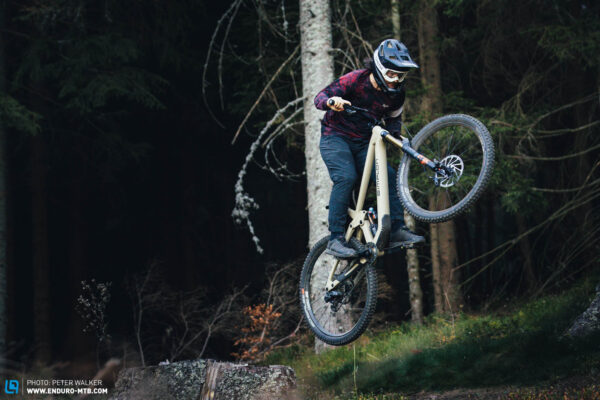
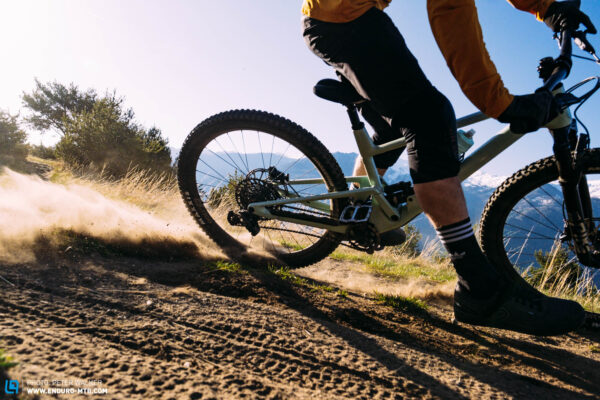
For maximum grip, all the flat pedals on test have large platforms that measure at least 100 x 100 mm. However, there still are big differences in the size and shape of the platforms, depending on the manufacturer. The platforms have small screws – pins that drill into the soles of your shoes and thus provide the necessary grip. However, more isn’t always better: it’s their size, arrangement and length that matters. The pins can either screw into the platforms from above with a grub screw or from below. Pins that screw in from below have the significant advantage that they can be replaced a lot more easily after getting damaged. The heads of grub screws that screw in from above often get damaged, meaning you’ll need pliers and a lot of patience to get them out.
Composite pedals are typically more affordable since they’re made of less expensive material. One of their disadvantages, however, is that they require a continuous axle, as the composite material can’t bear the load without its support. As a result, the platforms of these pedals are always slightly taller in the middle, which creates a convex shape. With convex platforms, the soles of your shoes make more contact with the pedals in the middle than at the front and back, providing a slightly less secure footing. Since aluminium is a lot stiffer and harder, manufacturers have more freedom in the design of the pedals and can use thinner and shorter axles. This allows for concave platforms that provide more grip and a more secure footing – much like a concave skateboard offers more grip than a flat board.
Clipless pedals – Firmly connected for the optimal footing
Clipless pedals provide a firm connection to the bike, making them the pedals of choice for the vast majority of racers across all disciplines from the Tour de France to the Downhill World Cup. But you don’t have to be a racer to appreciate the benefits of going clipless. Since there’s a mechanical connection, you can’t slip off the pedals and your feet are always positioned exactly where you want them, no matter if you’re battering through a rock garden or sprinting your heart out on a flat section. On the flip side, you can’t take your feet off the pedals as easily.
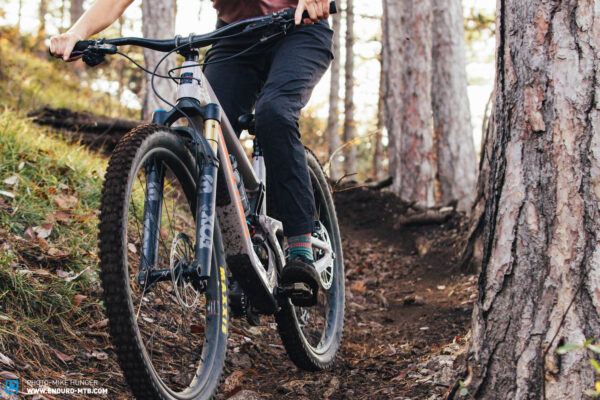
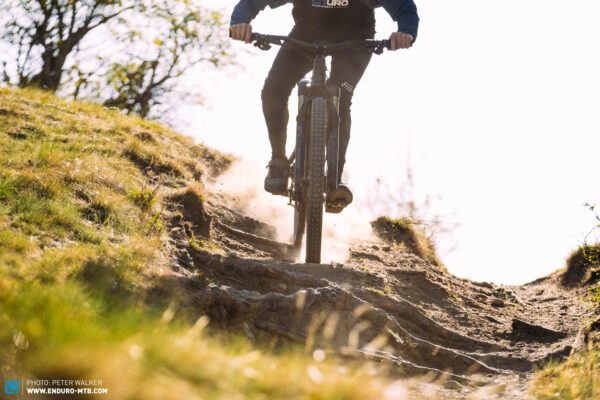
Clipless pedals require metal plates called cleats that are attached to the bottom of your shoes. These are specially shaped to click into spring-loaded mechanisms on the pedals. To click out, you must twist your feet outwards. There are different systems on the market, but still the most common system is called SPD (Shimano Pedalling Dynamics). Other manufacturers also use it on their pedals, though many have developed their own mechanisms in-house. The feeling of the mechanisms differs significantly. This depends on how the two brackets of the clipless mechanism are shaped. It also makes a huge difference whether the front, rear or even both brackets are spring loaded.
Furthermore, many pedals let you fine tune the feeling of the mechanism. There are usually two ways to do this: the setting of the spring preload, which determines how much force is needed to click in and out of the pedals, and the shape of the cleats. The latter changes the float and release angles. Float describes the freedom of movement that you have when clicked in, while the release angle indicates how far you must turn your feet to click out of the mechanism. Both are given in degrees.
How wide are you? The stance width and q-factor of the pedals on test
The stance width on the pedals is determined by the length of the axles or spindles. This and the q-factor are often mentioned in the same breath. With pedals, the q-factor is the distance between the outside of the crank to the centre of the pedal. Since the cranks are the same width apart on the vast majority of mountain bikes (the crank q-factor), the stance width is determined by the pedal q-factor. Your preferred stance width depends on your hip width, how tall you are, personal preferences and, of course, the use case. On cross-country or marathon bikes, the stance width is usually narrower, because that makes for more efficient pedalling mechanics. With trail, enduro or downhill bikes, the stance is usually wider, because that gives you more control on rough descents. Whether clipless pedals or flats, the stance width always has an influence on the ride feel. Flats offer more freedom in the placement of your feet, so manufacturers usually don’t specify the q-factor with these. There are noticeable differences between the pedals, nonetheless. With clipless pedals, the q-factor is specified because the distance from the outside of the crank arm to the middle of the clipless mechanism is fixed and easy to measure. Since the cleats on the shoes can usually be adjusted side-to-side, you can also adjust the stance width by adjusting the position of the cleats.
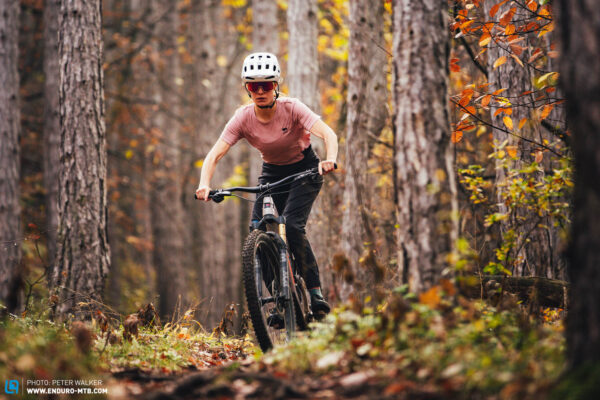

How we tested the 16 clipless and flat pedals
Our testers put the pedals through the wringer for several months in a variety of conditions. From home trail rides, bike park laps and shuttle runs to all-day adventures, everything was included. Of course, the trail conditions also changed considerably over time and the pedals weren’t spared from late summer dust, winter sludge, and frosty mornings. We couldn’t completely avoid the occasional pedal strike either as some pedals were involuntarily introduced to roots, rocks, and tree stumps.
So, the test field didn’t have it easy. We also paid attention to the ease of maintenance: how easy is it to open the pedals to grease or replace the bearings, for example? Does doing so require special tools? And how well are the bearings sealed to keep out dirt and moisture? During the tests, we could also see which pedals showed signs of wear and which continued to spin as smoothly as on the first day, and there were big differences here, too.
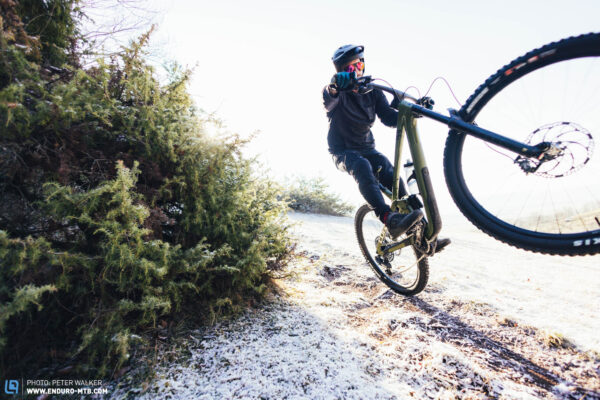
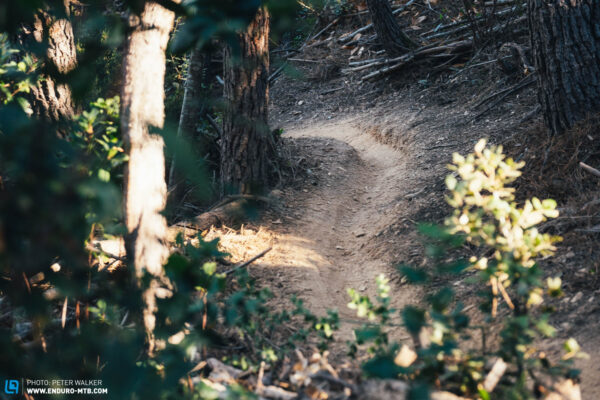
Conclusion – The best clipless and flat mountain bike pedals
First of all, all the pedals on test performed well and we experienced zero total failures, fortunately. For some, however, we found a very narrow use case, while others revealed shortcomings in terms of durability despite performing well. That said, we found a clear winner amongst both the clipless and flat pedals. Two pairs of pedals that can handle everything you throw at them and perform as expected, without you having to worry too much about what is happening under your feet. We also have one best buy: Flat pedals that perform consistently and come at a very reasonable price, making them an excellent option, especially for beginners or riders on budget.
The best clipless pedals: Hope Union Trail

The Hope Union Trail pedals are able to combine traits that seem mutually exclusive, offering a freedom of movement as well as a very defined clicked-in feeling. Thanks to the specially designed clipless mechanism that’s spring loaded on both sides, it’s super easy to click in while riding, too. In addition, the pedal cages offer a decent level of grip that you can customise by adjusting the length of the pins. Finally, the Union Trail pedals rely on durable bearings and are securely sealed, keeping the pedal spinning in all conditions. Top-notch trail performance without a headache!
The best flat pedals: Chromag Dagga
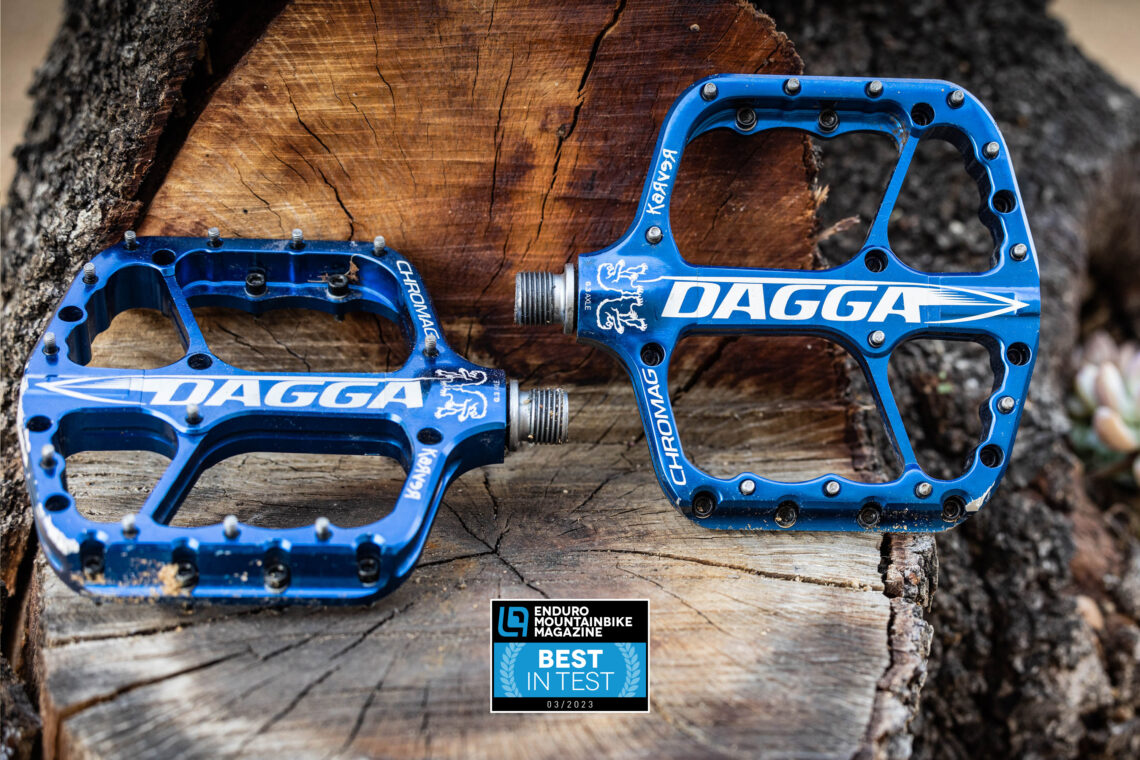
The Chromag Dagga pedals make a big impression. They’ve got huge platforms that are bristling with 12 pins per side, providing grip in all situations. The pins all screw in from below, so you can easily replace them in case they get damaged. If you want even more grip on the Daggas, you can remove the washers under the pins to lengthen them and make them even more aggressive. Due to the open design, they also provide excellent self-cleaning.
Our best buy: OneUp Composite

The OneUp Composite pedals are as unspectacular as they look. But they’re excellent nevertheless! For beginners, they present an affordable alternative to the more expensive aluminium options, with some pedals on test priced almost five times higher than the OneUps. Yet, the pedals offer plenty of grip while still allowing you to reposition your feet without too much trouble. You can’t go wrong here, finding loyal companions without breaking the bank.
all pedals in Review: Acros Clipless Pedal | Crankbrothers Mallet E LS | Hope Union | HT T2 | Shimano XT PD-M8120 | TIME SPECIALE 12 | Chromag Dagga | Crankbrothers Stamp 7 | Hope F22 | Look Trail Fusion | Nukeproof Horizon Pro Sam Hill | OneUp Composite Pedal | Race Face Atlas | Sixpack Kamikaze RA | SQ Lab 50X | Tatze Link Composite |
